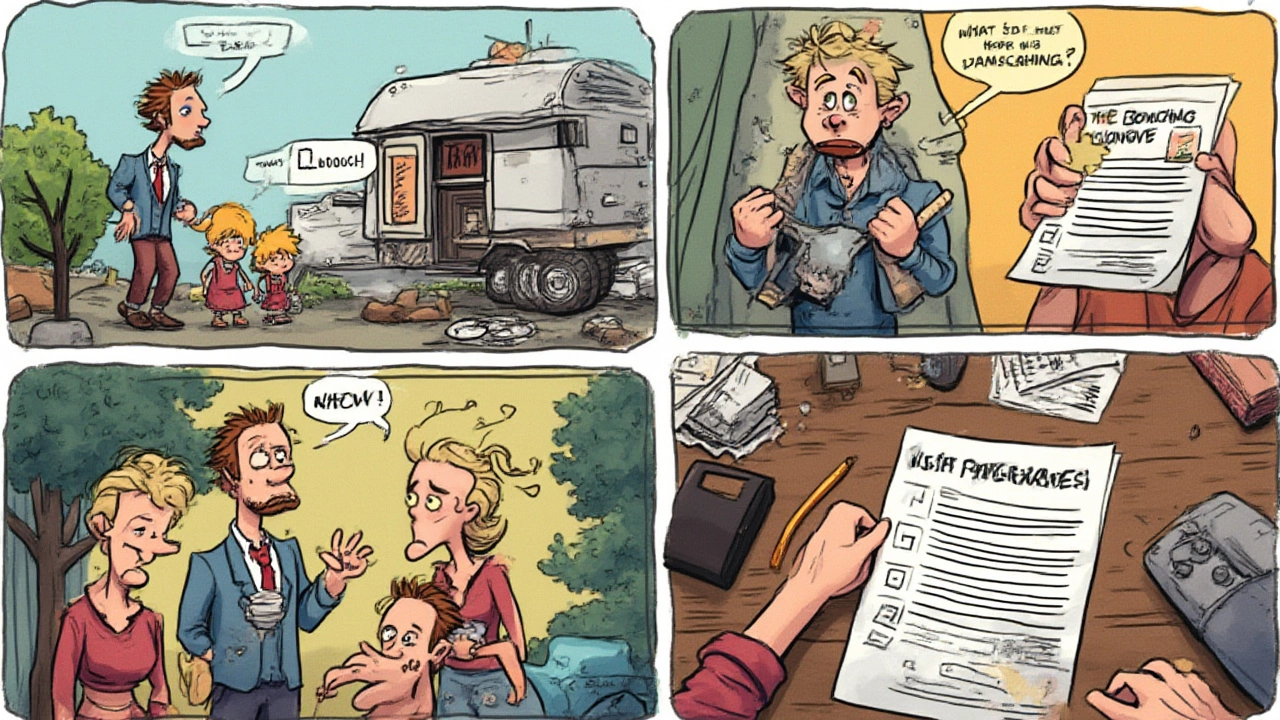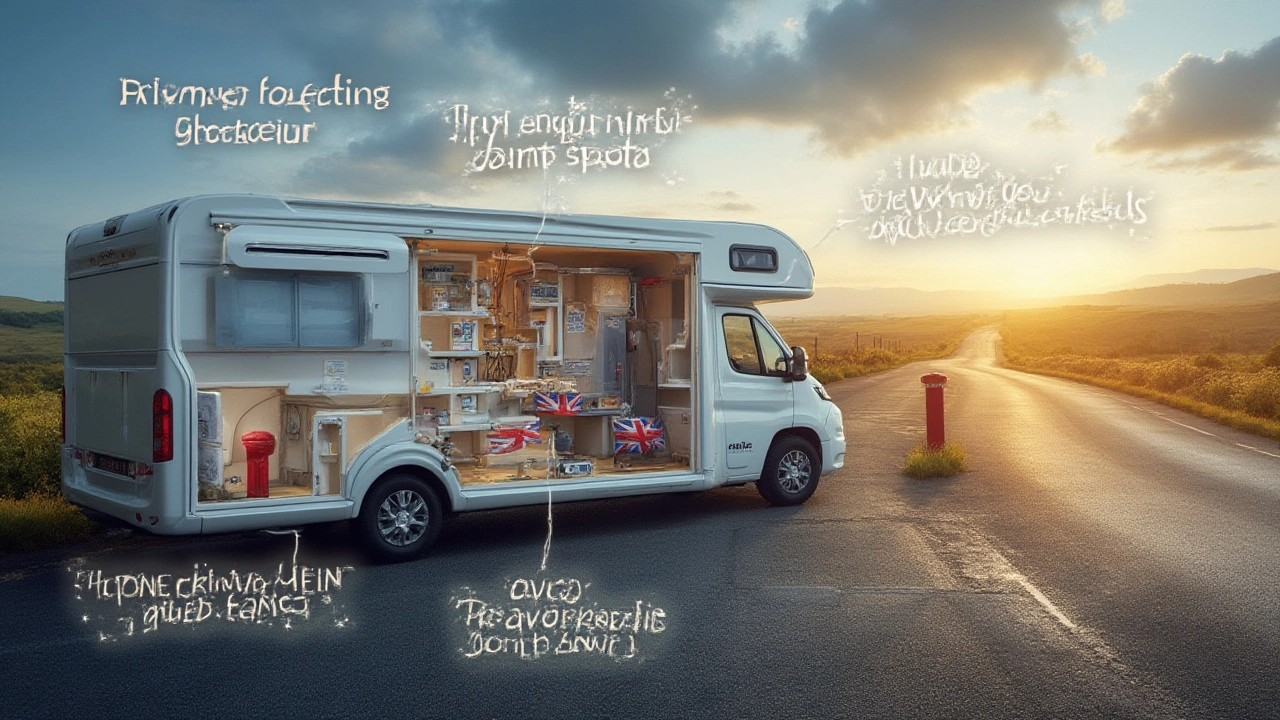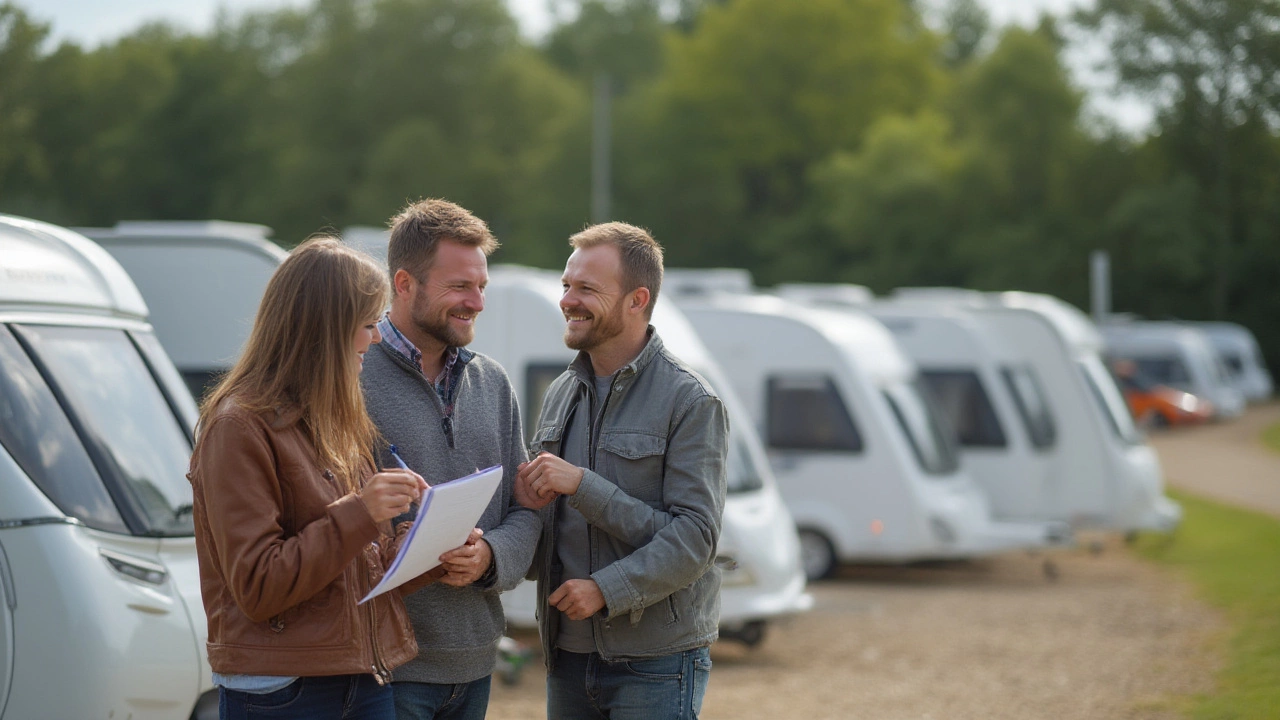Ever walk into an RV dealership and catch that whiff of fake air freshener, stale coffee, and the weight of about a thousand bad decisions sitting in the parking lot? You're not alone. Every year, tens of thousands of people get swept up in the dream—campfires, road trips, Instagram-perfect sunsets. Then the reality hits—costly repairs, buyer’s remorse, and a feeling you’ve bought far more (or less) than you bargained for. Buying an RV isn’t like grabbing the weekly groceries; it’s more like getting a pet elephant you plan to take on vacation. If you want to avoid the common trip wires, you’ve got to drop the romance for a second and get real about what RV buying mistakes actually look like. Here’s where people go wrong, and why it matters more than you might think.
Falling for the Hype: Common Pitfalls That Trap First-Timers
The glossy brochures and those YouTube tours make every RV look like a rolling palace, but here’s the thing: marketing always leaves something out. One of the biggest mistakes is shopping with your eyes and not your head. Sure, a fireplace in the lounge seems cool, until you realize it eats up storage or the furnace is barely enough for late autumn in Scotland.
The first pitfall is impulse buying. You see the rig, you want it, the dealer talks you up, and you sign. But did you research models, engines, or layouts? A 2023 survey from RVIA showed nearly 38% of new buyers didn’t know their ideal RV class before visiting a lot. Jumping in without studying what fits your travel style leads to a world of regret. For instance, Class A motorhomes might pull you in with their presence, but can you store one at home? Can you even drive something that massive down Cornish lanes?
Another trap? Assuming new means flawless. A shiny factory smell doesn’t guarantee reliability. Oddly enough, brand new RVs are notorious for “punch list” issues—doors that stick, windows that rattle, electrical quirks right from the get-go. A Consumer Reports study in 2022 found that one in five new RVs require at least two non-cosmetic fixes within their first year. And used RVs sometimes get the same care as abandoned garden sheds, so don’t go by appearances alone. You’ve got to check records, ask about winterization, and yes, look for weird smells.
And then there’s the mistake of shopping without a checklist. Do the appliances work? Can you physically fit on the bed, or will your feet hang off like in a bad hostel? Forgetting to test systems—plumbing, A/C, awnings—means you wind up with avoidable expenses. It’s not rare for buyers to discover their “dream” RV’s water lines leak, or the slides jam halfway out, only after grabbing the keys.
Financing brings its own headaches. Too many people take the first loan the dealership offers, locking into high-interest rates or balloon payments that seem reasonable until you add up the real long-term cost. RV loans sometimes stretch out 10-20 years, and the interest can snowball fast. Comparing outside financing, say through your bank or credit union, almost always offers better deals. And never skip the small print on warranties; exclusions written in tiny font can cost you dearly down the road.
Don’t ignore how you’ll use your RV. People picture themselves crossing Europe, but end up camped 40 minutes from home, only using their van three summer weekends. Matching your purchase to your actual travel goals prevents wasted cash. That’s backed up by a 2024 poll where nearly half of buyers said they bought too big or too small based on their initial fantasy, not their routine.
Let’s get into specific numbers that show just how off the mark people can get:
| RV Issue | % of Buyers Affected (2023) |
|---|---|
| Surprise maintenance costs | 46% |
| Underusing RV (less than 10 nights/year) | 53% |
| Finding layout impractical after purchase | 27% |
| Needing immediate repairs | 28% |
| Unhappy with fuel economy | 34% |
Each of these missteps isn’t just a bummer—they can add thousands to your costs or suck the fun right out of travel. The key? Don’t buy on emotion or pressure. Stick to your process, ignore the sales pitch until you’ve questioned and prodded every feature. Trust me, taking an extra hour can save you months of headaches.

Missing the Nitty-Gritty: What Shoppers Regularly Overlook
Time to dig deeper into where smart shoppers shine and where careless ones fumble. You might know about checking the mileage or asking about leaks, but what about the “little” things? These often turn into the most frustrating surprises after you pull off the lot. Let’s get granular.
First, weight ratings and tow capacity. People underestimate how heavy these beasts get, especially loaded for a family trip. Every RV has a Gross Vehicle Weight Rating (GVWR), but many owners blow right past it stuffing in extra gear, bikes, or bigger batteries. If your vehicle can’t safely tow your trailer—or stop it—you’re risking more than a ruined weekend. Insurance studies have shown that overloaded RV accidents are up 18% since 2020, usually traced to ignored weight specs.
Storage is another biggie. Those showrooms feel huge until you actually bring stuff. Imagine loading a week’s groceries, bedding, jackets, and everyone’s shoes—suddenly, that “ample” cupboard is a puzzle box. Pull up the cushions, check every under-bed nook, open every overhead and basement hatch. And if you travel with kids or pets, double your estimate. A 2024 UK camper survey found that 61% of families said storage ran out within the first six months, forcing creative (and usually annoying) solutions like rooftop bins or towing extra trailers.
Let’s not forget about layout versus real use. Tour the RV the way you’d actually live in it. Pretend to cook a full meal, all burners going. Lie down on each bed—don’t just glance. Try the shower with the (water) pump running. Realize that some layouts look fine when empty, but get cramped with just a couple of duffel bags lying around. If you’re above average height (shout out to anyone over 6 feet), certain bathrooms and beds are basically unusable. In one thread on a popular camping forum, dozens of tall buyers lamented head-kicking ceiling fans and “coffin-like” bunks.
Another thing? Technology in RVs has leapfrogged lately, with WiFi routers, solar setups, and fancy control panels. But not all are equal. Many “upgrades” use the cheapest parts that barely survive a rainy season, and those touchscreens age faster than bananas. If tech matters, research brand-specific issues—especially for connectivity, insulation, and solar. A quick online search will uncover which models have a reputation for constant error messages or mysterious beeping at 3 a.m.
People usually overlook climate needs. Not every RV handles British drizzle, Alpine snow, or Spanish heat. Check insulation, heating options, and cooling power. Ask about condensation—many buyers learn too late that a poorly-insulated van becomes a swamp inside, with everything from bedding to breakfast cereal turning damp. Look for things like double-glazed windows, heated tanks, and decent roof vents. Poor insulation is one of the top reasons owners move on from their first RV after just a year or two.
Maintenance requirements are another barely-glanced topic. Ask yourself: Can you do basic fixes, or will every issue mean a two-hour dealer detour? How easy is it to access engine parts, plumbing, or change a flat? And what’s the dealer’s reputation for service? In 2023, the average time for booked repairs was 3-5 weeks in peak season. That’s a lot of missed adventures while you stare at waiting-room walls. Forums are full of horror stories: windows ordered before Easter that arrive after the kids go back to school.
Electrics, too. Just because something “works” on site doesn’t mean it lasts off the grid or in rural France. Battery capacity and inverter strength make or break wild camping. Loads of buyers assume a standard leisure battery’s enough for a weekend only to learn that using the kettle, lights, and charging the kids’ iPads kills power by bedtime. Talking specs, the average RV battery gives about 60-100 amp-hours—barely enough for high-use families without solar upgrades or backup generators.
Want a shortcut? Here’s a checklist of details not to overlook before you buy:
- Check GVWR, actual weight with full tanks, and your tow/car rating
- Open, close, and inspect every window, hatch, and blind
- Give the shower, toilet, and kitchen a trial run (listen for noisy pumps or smells)
- Look for water stains, spongy walls, or smell of mildew—hidden leaks are toxic (and pricey)
- Test all electrical sockets, USBs, and every light
- Review user manuals and make sure they’re present
- Ask the owner or dealer about usage history and who did any conversions or upgrades
- Read reviews for specific faults—every model has quirks
Because the tiny stuff? It grows into the stuff that makes or breaks your whole trip.

Smart Moves: What to Do (and Avoid) for a Stress-Free Buy
If you’re ready to roll and want your RV story to be epic, not tragic, you’ll need some tried-and-true strategies. Skip these, and you might as well budget for panic attacks.
Set a non-negotiable budget before you ever window-shop. Include the sticker price, plus tax, insurance, storage, accessories, and at least £1,000-2,000 for immediate upgrades or fixes. About half of first-time buyers, according to a 2023 Statista report, end up going 15% over their planned spend within 6 months. Don’t let enthusiasm bulldoze your wallet. Dealers are salespeople—they get bonuses for move-in-day excitement. Your job is to be the calm, boring voice of reason.
It’s smart to get a third-party inspection, even on new units. There’s a reason “PDI” (pre-delivery inspection) exists—no one’s perfect on the assembly line. If the dealer hesitates about independent checks, that’s a big red flag. Take as long as you need on your inspection. Sit, lie, poke, prod. If you’re uncomfortable being picky in public, remember: once you buy, the sales guy forgets your name, but you’re stuck fixing their oversights.
Another smart move? Don’t skip insurance research. Some vehicles require entirely different coverage to cars or vans, and “cover for contents” or breakdown rescue might be extra. Compare different providers and read the exclusions list—sometimes “RV breakdown cover” doesn’t extend to the coach, just the cab. A few providers sneakily exclude water damage or break-ins if you leave the van for more than 24 hours unattended.
Get familiar with depreciation, because RVs can drop in value fast—often 20-25% just driving off the forecourt. That’s huge compared to cars, which average a 10-15% hit the first year. Know that some brands and layouts hold value better; a quick scan of used sites tells the story. If resale matters, go for layouts and features with broad appeal, and keep the paperwork airtight.
Try before you buy—a weekend rental beats weeks of research. It’s the only way to learn whether you loathe driving a coach or love the freedom. Ask online groups about hiring the same model you’re tempted by. People often discover deal-breakers they never imagined: the bathroom’s too tiny, cooking’s a hassle, or maneuvering freaks them out. A small spend on trial rental can save tens of thousands in buyer’s remorse.
And don’t fall for the “limited time offer” or “another buyer’s interested” trick. There are always more RVs out there. Never rush because of dealership pressure or a Facebook post that “someone’s coming at 3 p.m.” Making them wait is part of the dance. You want the right fit, not the quickest close.
Pay attention to after-sales service. Before you commit, ask how long repairs actually take, whether you can get warranty work nearby, and how fast they answer phone calls. A reputable dealer will have clear service channels. If they dodge the question, or can’t put you in touch with real owners, that’s a pretty reliable warning sign.
And when you’re ready to seal the deal, read every line of every contract. “As is” means “your problem now,” and warranties get voided with the tiniest pitfall—wrong fuel, missed winterizing, non-approved parts. Tick every box, save every receipt, and take photos of the final state. The last buyer I heard from saved £3,000 by proving hail dents weren’t present before pick-up. Documentation is power.
You’ll have a touring home that matches your reality, not just your Pinterest board. The right buy takes research, patience, solid checking, and a healthy dose of skepticism. Your reward? Adventuring on your terms, with more time spent living—and way less time stuck in repair shops.






